Basic Approach
The Maruha Nichiro Group's business is based on a unique value chain from procurement, production and processing to sales. We recognize that global warming poses risks to our business activities, such as the migration of marine products to fishing grounds, the migration of agricultural products to production areas, and the depletion of marine resources due to the destruction of ecosystems. As a countermeasure to these risks, we strive to reduce CO₂ emissions through efficient energy use and capital investment.
Summary of Progress in FY2024
Results of the Previous Medium-Term Management Plan (FY2022–2024)
Materiality: Climate Change
KGI (the figure which wants to have 2030): Establish a leading position in the industry for decarbonization and action for climate change
Responsibility Department: Maruha Nichiro Sustainability Department (former Corporate Planning Department sustainability group)
| KPI | Target | Self-evaluation and problem of the prometaphase management plan | ||
|---|---|---|---|---|
| The aim year | Target value | Progress result comment | Self-evaluation | |
| Formulation of CO₂ emission reduction roadmap (Domestic G) | 2022 | - | It is development, disclosure finished in September, 2022 | ★★★★★ |
| CO₂ emissions reduction rate (FY2017 ratio: Domestic G) | 2030 | More than 30% | We reduce a CO₂ discharge 13.3% of ratios in 2017 | ★★★☆☆ |
| Achieve carbon neutrality (Overall G) | 2050 | - | Under measure enforcement various toward achievement of carbon neutral | ★★★☆☆ |
★★★★★ : KPI for FY2030 achieved.
★★★★☆ : Progress toward achieving KPI for FY2030 in advance.
★★★☆☆ : KPI for FY2024 achieved or progress toward achieving KPI for FY2030 as planned.
★★☆☆☆ : KPI delayed.

Medium-Term Management Plan (FY2025–2027) KGI, KPI
Materiality: Climate Change
KGI (the figure which wants to have 2030): Aiming for a 2050 carbon neutral and establishing a leading position in the industry with regard to decarbonization and climate change.
Responsibility Department: Maruha Nichiro Sustainability Department (former Corporate Planning Department sustainability group)
| KPI | Target | |
|---|---|---|
| 2027 | 2030 | |
| CO₂ emission reduction rate (the 2017 ratio: domestic G) | More than 20% | More than 30% |
| CO₂ emission reduction target of overseas G, Scope3 goal setting of domestic G | Goal setting | - |
Main Initiatives
CO₂ Emissions Reduction Project
As part of our action against climate change, we have set CO₂ emissions reduction as a KPI and have been working to achieve our targets. In order to expedite our efforts and increase their reach, we launched the CO₂ emissions reduction project in FY2023. A Managing Executive Officer and the General Manager of the Production Management Department serve as the project owner and project leader, respectively, and going forward, we will continue to implement concrete initiatives such as reviewing targets for each site and methods to reduce CO₂ emissions.
Management Structure of CO₂ Emissions Reduction Project
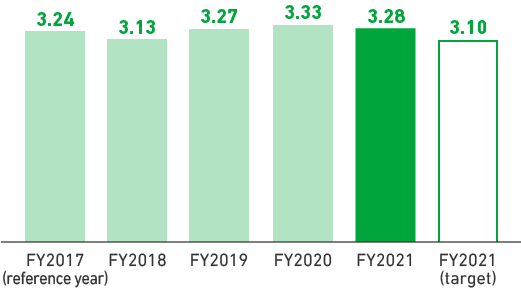
Progress in Reducing CO₂ Emissions in Accordance with the CO₂ Emissions Reduction Roadmap
The “Decarbonization Roadmap” formulated in September 2022 divides the period up to FY2030 into three phases, with FY2017 as the base year, Phase 1 (FY2022 to FY2024) targeting a 10% CO₂ reduction rate, Phase 2 (FY2025 to FY2027) a 20% CO₂ reduction rate, and Phase 3 (FY2028 to FY2030) a 30% or more CO₂ reduction rate, ultimately aiming for carbon neutrality. In Phase 3 (FY2028-FY2030), we aim to achieve a CO₂ reduction rate of 30% or more, with the ultimate goal of becoming carbon neutral.
In FY2024, the final year of Phase 1, we reduced CO₂ emissions by 33,784 tons compared to FY17. This represents a 13.3% reduction compared to the same year, achieving the Phase 1 goal of a 10% reduction.
Continuing from FY2023, solar panels at Maruha Nichiro's New Ishinomaki Plant, Maruha Nichiro Kyushu, Sun Gourmet, and Maruha Nichiro's Aquaculture Technology Development Center have been in operation, generating approximately 1.44 million kWh in FY2024 and reducing CO₂ emissions by 677 tons. In addition, the purchase of non-fossil certificates at Nihon Silo has enabled the company to reduce CO₂ emissions by 1,176 tons per year compared to the previous fiscal year.
In FY2025, when we enter Phase 2, we expect to reduce CO₂ emissions by approximately 25,000 tons through the introduction of non-fossil certificates at our five directly operated plants. In addition, the Gunma Factory is expected to generate 430,000 kWh of electricity and reduce CO₂ emissions by approximately 191 tons, etc., through the introduction of solar power generation. We will continue to study the possibility of switching to CO₂-free electricity and installing on-site and off-site solar panels to further accelerate reductions.
Changes in CO₂ Emissions Reduction
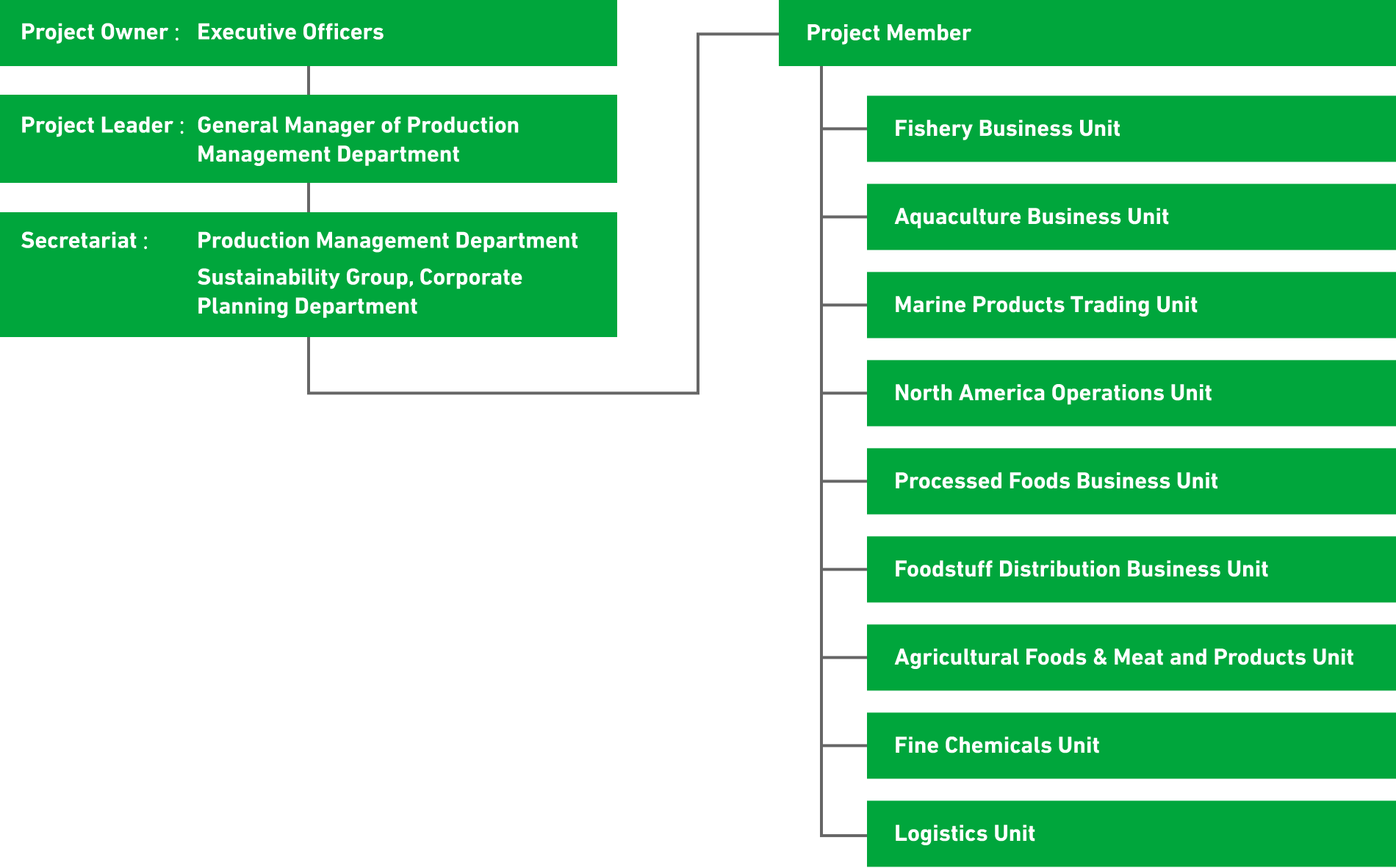
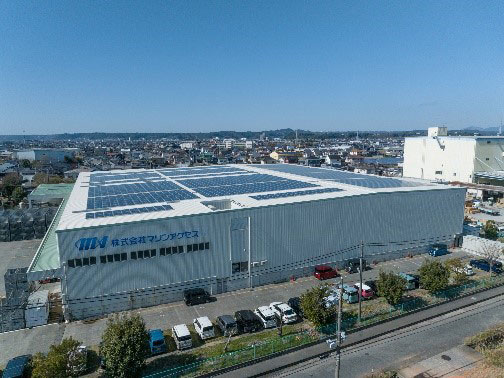
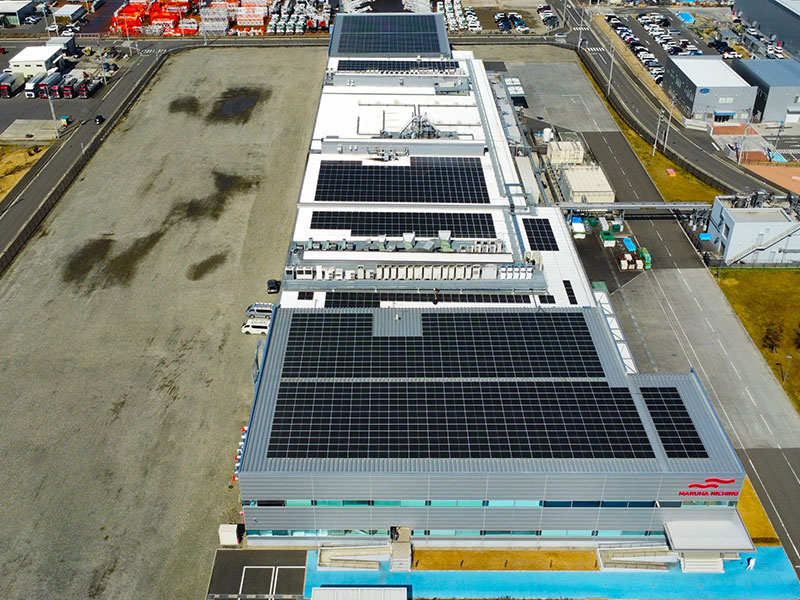
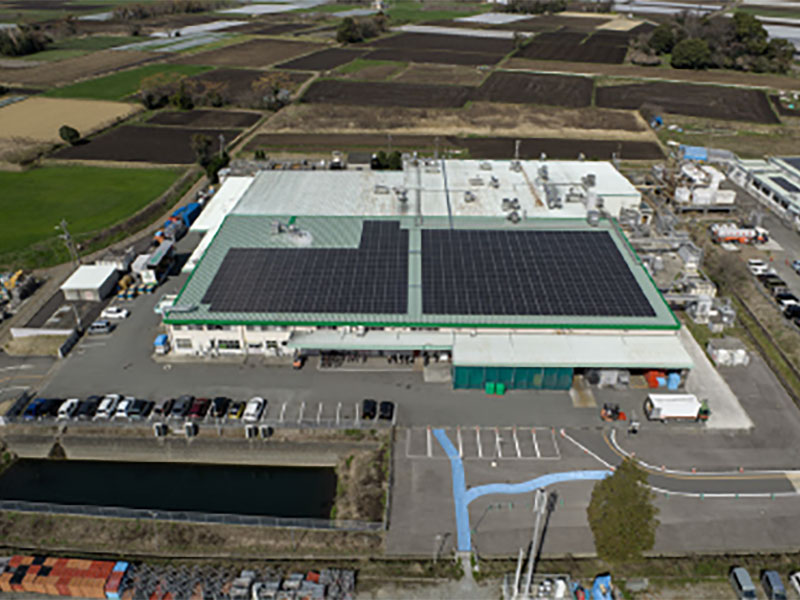
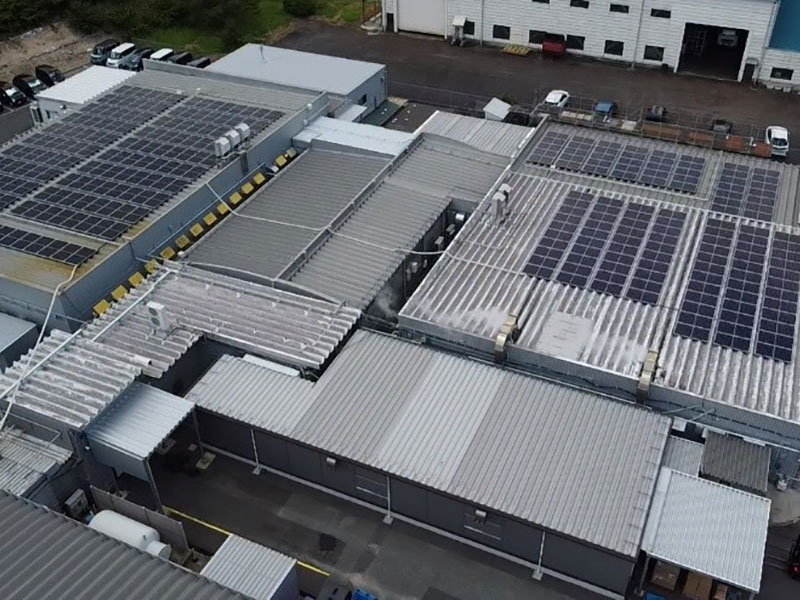
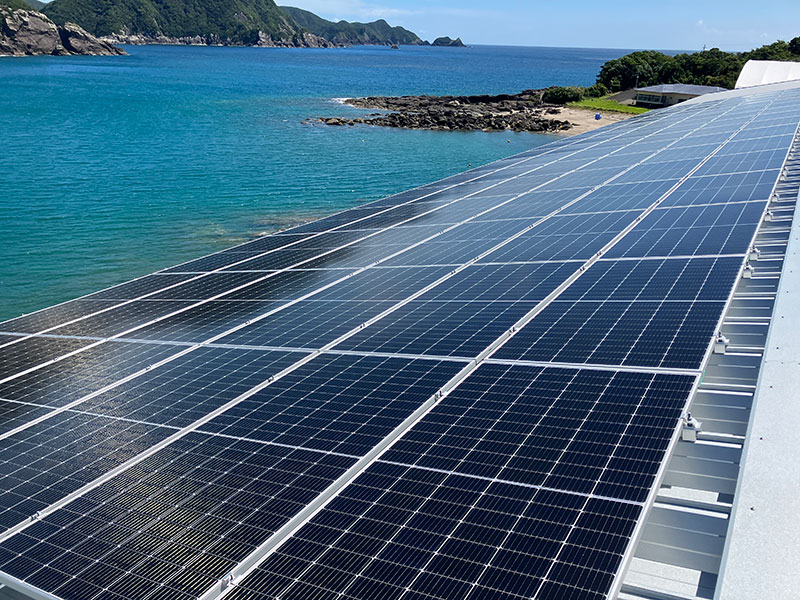
Calculation of Carbon Footprint of Our Products
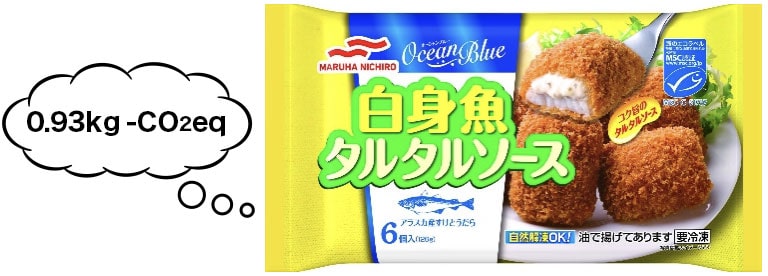
In August 2023, we were selected as one of the participating companies in the “Model Project for Carbon Footprint of Products and Services (hereinafter referred to as ‘CFP’) in fiscal 2023” organized by the Ministry of the Environment, and calculated the CFP for our frozen food “White Fish Tartar Sauce”. In fiscal 2024, we calculated the CFP for “DHA-included Risala Sausage 3-pack” from the fish sausage category and “Mizuni Mackerel” from the canned food category, with the aim of calculating the CFP for other main product categories. The results suggest that the Risala Sausage uses environmentally friendly Alaska pollock as part of its ingredients, as does the white fish tartar sauce, and that the mackerel simmered in canned water can reduce CO₂ emissions because the entire process from catching the mackerel to manufacturing is done in Japan. We will continue to work on reducing greenhouse gas emissions by actively offering food products made from environmentally friendly raw materials, while promoting CFP calculations for our other mainstay products.
Calculation of Carbon Footprint of Frozen Foods (PDF: 646 KB/ 6 pages/ Japanese only)
Calculation of Carbon Footprint of Fish Sausage (PDF: 616 KB/ 6 pages/ Japanese only)
Calculation of Carbon Footprint of Canned Foods (PDF: 581 KB/ 6 pages/ Japanese only)
CDP “Climate Change Report” Certifies “A-” for the Second Year in a Row
Maruha Nichiro has responded to the CDP Climate Change Report 2024 by CDP (headquartered in London, UK), a non-profit organization that operates the world's leading environmental disclosure platform, and received an “A-” rating for the second consecutive year following 2023. The CDP Climate Change Assessment is a survey of more than 24,800 companies worldwide, giving them a score of A to D- based on how effectively they are addressing and disclosing climate change issues.
We are working on “addressing climate change issues” as one of the materialities of our mid-term management plan “For the ocean, for life 2027,” and we are working to reduce CO₂ emissions by installing solar panels at our domestic and overseas bases, conducting life cycle assessments of farmed fish, calculating the carbon footprint of frozen foods, and so on. We are working to reduce CO₂ emissions by installing solar panels at our domestic and overseas bases, conducting life cycle assessments of farmed fish, and calculating the carbon footprint of frozen foods.
By disclosing information through the CDP, we will respond to requests for further transparency from financial institutions, customers, and other stakeholders, and promote efforts to realize a sustainable society.
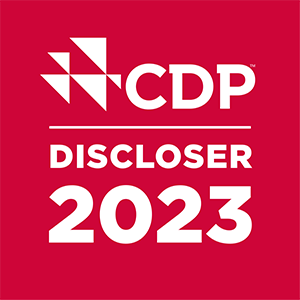
Data on Scope 1-3
Maruha Nichiro Group calculates Scope 1-3. Please refer to the following for details.
Environmental Data (PDF: 359 KB/ 3 page)
Scope 3 Calculations and Third-Party Verification
To ensure the reliability of the disclosed data, CO₂ emissions data (Scope 1-3) are verified by a third-party verification organization.
Please see below for the third-party assurance report for FY2022 out of the above Scope 1-3 data (GHG Protocol-compliant data that also excludes offsets).
* The Third-Party assurance report covers Scope 1 to 3 data for FY2022.
Third-party Verification (PDF: 926 KB/ 2 page/ Japanese only)
Life Cycle Assessment of Farmed Fish
Since FY 2023, Maruha Nichiro has been conducting Life Cycle Assessments* (LCA) of its own aquaculture business with Professor Itubo of Waseda University, and in the same year we calculated CO₂ emissions over the entire life cycle of farmed yellowtail from the introduction of fry to shipment. We will continue to conduct LCA for our own farmed fish, and with the cooperation of our suppliers, we will continue to study for the sustainable development of the aquaculture industry.
These results were reported at the 20th Japan LCA Conference.
* Life cycle assessment: A method for quantitatively evaluating the environmental impact of a product or service throughout its life cycle.
Life Cycle Assessment of Farmed Fish (PDF: 889 KB/ 7 pages/ Japanese only)
Upgrading Freezers for Frozen/Refrigerated Warehouses to Non-CFC Equipment
The Maruha Nichiro Group is moving forward with the conversion to CFC-free refrigeration equipment.
Ltd. has been gradually converting its main freezing and refrigeration equipment to CFC-free since fiscal 2012, and plans to convert 100% of its main freezing and refrigeration equipment to natural refrigerants in the future.
In fiscal 2022, Maruha Nichiro Ocean Inc. introduced non-CFC equipment cooled by high-efficiency natural refrigerant chillers for freezing and refrigerated warehouses. In fiscal 2024, the company reduced annual CO₂ emissions by approximately 3,578 tons.
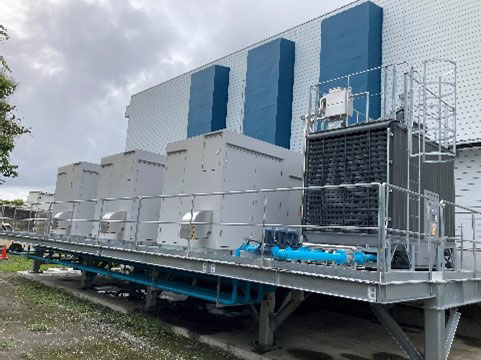
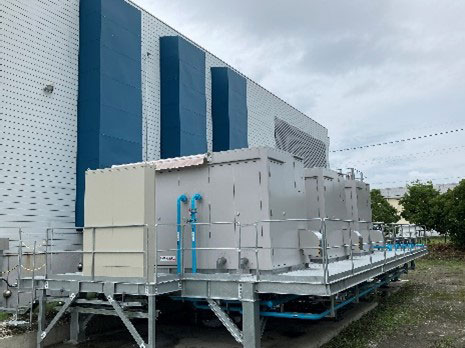
In fiscal 2023 and 2024, we newly introduced CFC-free equipment at Sun Gourmet Corporation, Maruha Nichiro Livestock Products Sapporo Plant, and Maruha Nichiro Logistics Kyushu Branch Hakozaki Distribution Center. All of these facilities were selected and subsidized by the Ministry of the Environment in fiscal 2023 as part of a project to promote the de-fluorination and decarbonization of refrigeration equipment that supports the cold chain, resulting in an annual reduction of approximately 1,591 tons of CO₂ emissions at all three locations. Furthermore, we are planning to introduce one non-CFC refrigeration chiller at our Shimonoseki Plant in FY2025.
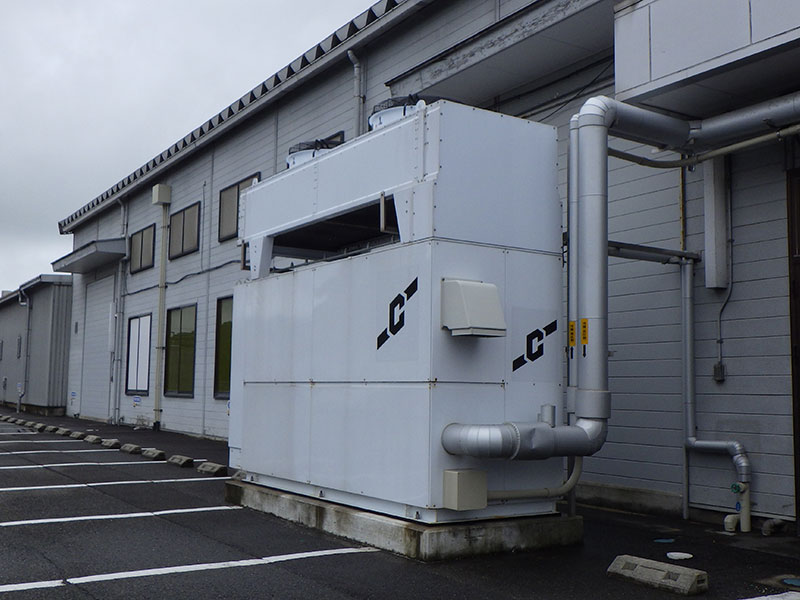
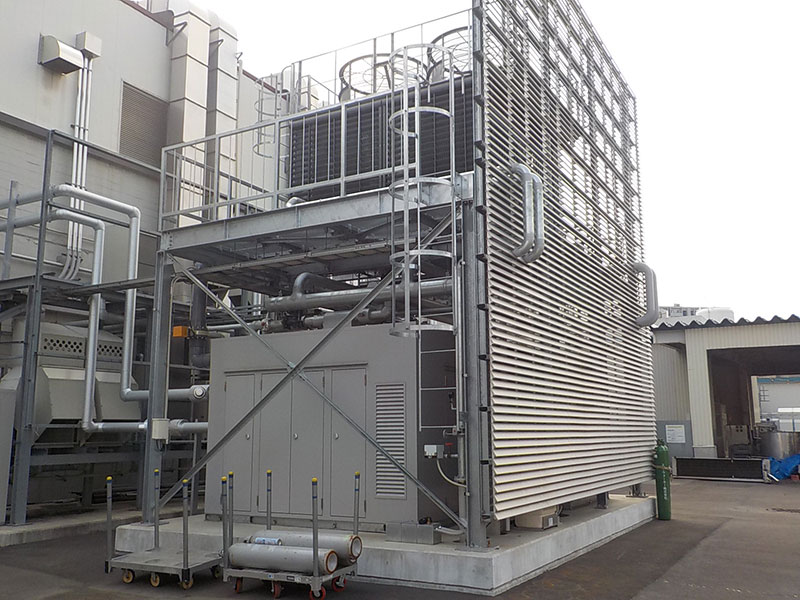
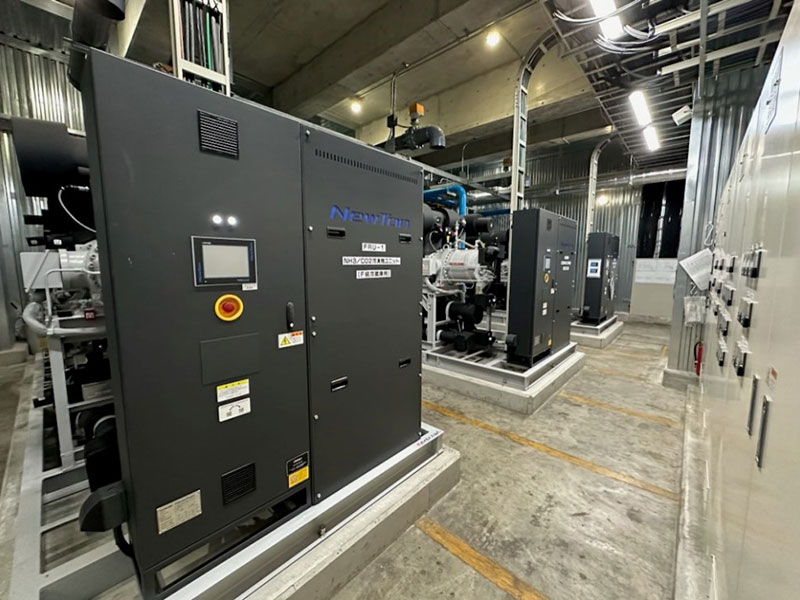
Percentage of Natural Refrigerant Equipment Among All Major Refrigeration and Freezing Equipment in the Company, Including Existing Equipment
| FY | 2025 (the present) | 2030 (Target) | 2040 (Target) | ||
| Category | Main refrigerators | Refrigerant kind breakdown | Natural refrigerant machine | Natural refrigerant machine | |
| The total number | Freon machine | Natural refrigerant machine | |||
| Number | 51 | 26 | 25 | 40 | 51 |
| The ratio that a natural refrigerant apparatus accounts for | - | - | 49% | 78% | 100% |
* The total number of main refrigerators: 51
Other Initiatives
Case Study: Expand Energy-Saving Equipment and Improve Energy Efficiency (PDF: 225 KB/ 1 page)
Case Study: Adoption of Biomass Ink (PDF: 223 KB/ 1 page)
Case Study: Promoting Carbon Neutral Activities (PDF: 201 KB/ 1 page)
Maruha Nichiro Group Refrigerant Purchases (ODS emissions) (PDF: 42.6 KB/ 1 page/ Japanese only)

